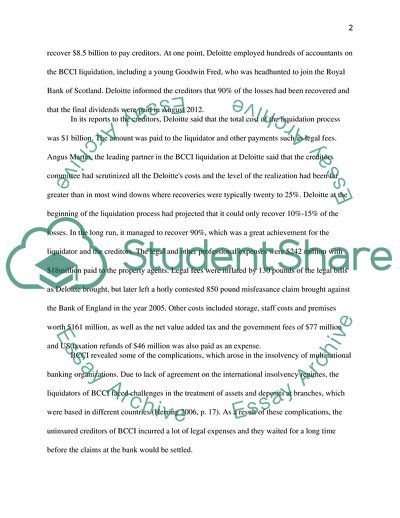Discuss the Collapse of the bank credit and commerce internation Research Paper. https://studentshare.org/macro-microeconomics/1873801-discuss-the-collapse-of-the-bank-credit-and-commerce-internation-bcci-the-solution-that-led-after-the-collapse
Discuss the Collapse of the Bank Credit and Commerce Internation Research Paper. https://studentshare.org/macro-microeconomics/1873801-discuss-the-collapse-of-the-bank-credit-and-commerce-internation-bcci-the-solution-that-led-after-the-collapse.


